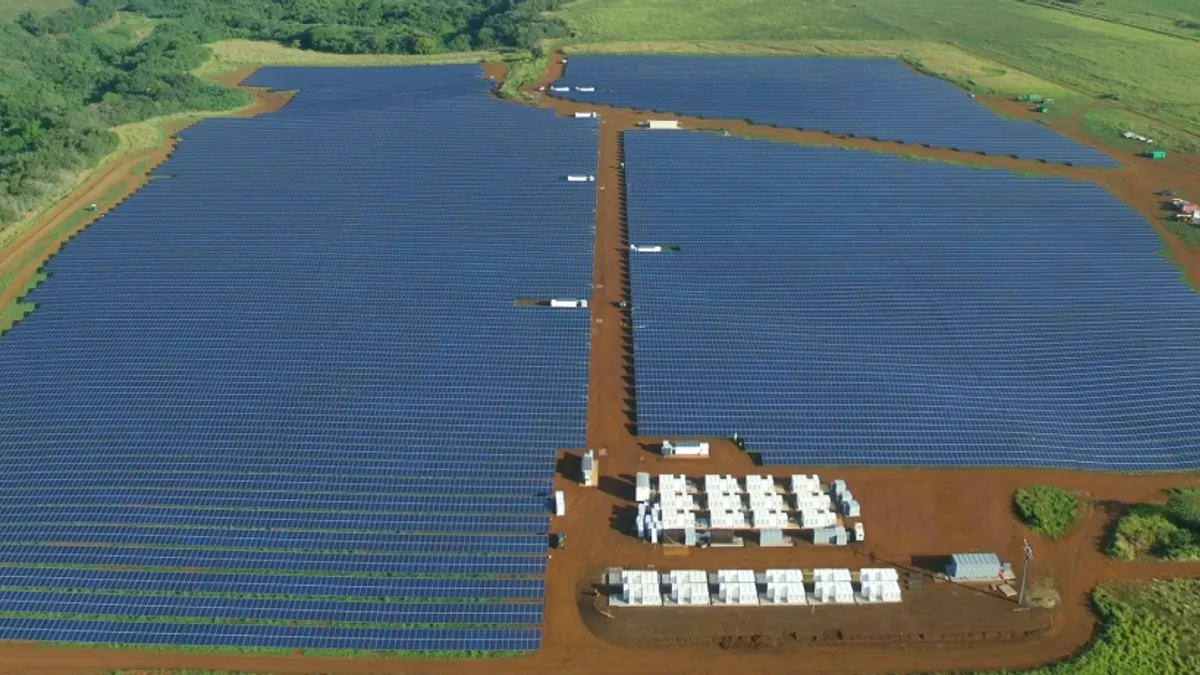Dive Brief:
-
Florida Power & Light unveiled plans on Thursday to build what it says will be the largest solar-powered battery system in the world.
-
The 409 MW/900 MWh Manatee Energy Storage Center is slated to begin operation in 2021, powered by an existing FPL solar plant built to help phase out two units of its gas-fired Manatee Clean Energy Center. The current largest solar-powered battery system is 100 MW/129 MWh, located in Australia.
-
The NextEra subsidiary in January unveiled plans to build 30 million photovoltaic panels by 2030, estimated to total 8 GW to 10 GW or more of solar power. As part of that deployment, the utility earlier this month filed plans for a 1,490 MW community solar project, which would more than double the country's current 1,387 MW of community solar.
Dive Insight:
As the costs of solar and storage continue to fall, more utilities are adding the resources to their generation portfolios. Earlier this week, Bloomberg New Energy Finance reported that the levelized cost of electricity from storage has fallen 76% since 2012, making storage plus renewables projects an economically viable replacement option for the large-scale deployments needed to phase out large fossil fuel plants.
FPL's battery plan is part of its intention "to accelerate the retirement of two, 1970s-era natural gas generating unit's at FPL's neighboring power plant, and replace them with renewable energy," according to its press release.
It is also "planning smaller battery installations across the state, numerous solar power plants and efficiency upgrades to existing combustion turbines at other power plants to replace the 1,638 megawatts of generating capacity" of those two gas units.
The utility currently operates four natural gas plants, generating over 70% of its resource mix, and one coal plant, scheduled to be retired by the end of 2020.
Although the utility's "30-by-30" would roll out the largest amount of solar by capacity, critics note that it is not the largest by wattage per customer, considering the utility serves over 10 million residents in Florida.
The majority of solar rollouts in the state are utility-driven because the state does not allow for third party solar financing, which developers say is a barrier to more wide-scale deployment. However, in January, the Florida Public Service Commission approved a Sunrun lease contract, stating the developer was not a public utility but that it also did not consider the deal a sale of electricity.















